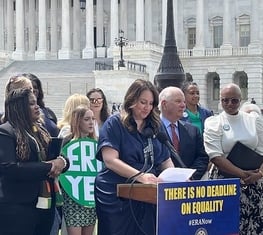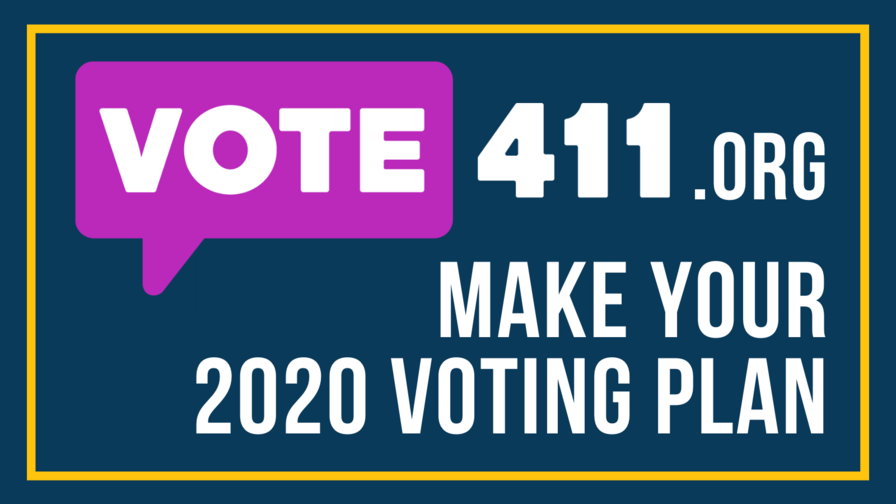October is Voter Education Month. Make Your 2020 Voting Plan!
Election Day 2020 is only a few short weeks away and early voting has already begun in states across the country! Since today marks the beginning of Voter Education Month, now is the time to make your plan for how you will cast your vote safely and securely on or before Tuesday, November 3. A voting plan is your playbook for how and when you will cast your ballot for the upcoming election, and the tools you need to do so. For some voters, it may mean taking time off from work or getting up early to go to the polls in person. For others, it may mean requesting and returning a mail-in ballot or taking advantage of local early voting opportunities.
Creating a voting plan that fits your needs makes casting your ballot easier and less prone to complications. This year is unlike any other election year in recent memory. And at the League of Women Voters we know that there is a lot of information out there to sift through as you develop the best voting plan for you.
Here are four easy ways that our one-stop shop for election information — VOTE411.org — can help you get started on your plan today:
Step 1: Check your registration status/register to vote.
Are you registered to vote? Is your registration up to date? If you’re uncertain, enter your name and address at VOTE411.org to check your registration status. Not registered? No problem! You can register to vote on VOTE411.org as well, but be sure to check your state’s registration deadline. VOTE411 lists current deadlines for each state to register to vote for November 3. Some states allow voters to register in person on Election Day or during early voting, while others require that you register up to 30 days in advance.
Step 2: Learn about your early voting options.
Once you’ve confirmed your voter registration, it’s time to determine how and when you are going to vote this year. Most states offer a range of voting options for 2020, which can help ensure you participate in the election even if you are nervous about exposure to COVID-19 by voting in person.
Option 1: In-person early voting polling locations. Does your state allow early voting? There are nine states — Alabama, Connecticut, Delaware, Mississippi, Missouri, New Hampshire, New Jersey, Oregon, and South Carolina — that (currently) have no in-person early voting polling locations for the 2020 election. Early voting allows registered voters to vote in person, at a designated polling location or their local election official’s office on specified dates before Election Day, without an excuse or stated reason. Many states that allow early in-person voting, as well as the District of Columbia, are planning to allow some weekend early voting. However, the time period for early voting varies from state to state, and sometimes even within a state ― we’re talking three days in some states and 45 days or more in others ― so be sure to check VOTE411.org for the most up-to-date information on your state.
If you do vote in person, it’s important to find out where your polling location is, determine how you’re going to get there — walk, bike, car, or other form of transportation — and decide when you’re going to vote. It’s critical that you follow all current COVID-19 safety guidelines: wear a mask, use hand sanitizer, stay six feet away from other people, and for good measure, bring your own black pen and avoid peak voting times (usually when the polls open and when the polls close). Voting during non-peak times helps keep the lines shorter, protecting you and helping to keep those that can only vote during peak times safer.
Option 2: In-person absentee voting. In some states, you may cast an absentee ballot in-person before Election Day. To do this, you must request an absentee ballot from your state and complete it at an official government office, such as a Board of Elections, instead of a designated polling location. Your state may also require you to have a qualifying reason for voting absentee. If this is the best option for you, be sure to check VOTE411.org for the specific process you need to follow in your state.
Option 3: Absentee/mail-in voting. The biggest differences between “absentee” and “vote-by-mail” are whether a voter has to request a ballot be sent to them and whether a voter needs to have a qualifying reason. States that use an absentee voting system require voters to request a mail-in ballot, and some require you to state a qualifying reason for why you are unable to vote in person on Election Day. A state that uses a vote-by-mail system proactively mails a ballot to every registered voter, without the voter needing to ask for it.
A unique aspect of this year is that many states are using their standard absentee voting system to allow people to vote by mail for the November election, while others are joining the ranks of states that proactively mail a ballot to all registered voters, due to the COVID-19 pandemic. And, unfortunately, some states are still in the process of deciding who is allowed to participate in absentee/mail-in voting this year. As we get closer to November 3, be sure to check VOTE411.org for changes to relevant deadlines where you live.
To learn more about the difference between absentee voting and vote-by-mail, check out our blog Knowing the Difference: Voting Absentee vs. By Mail.
If you’re voting by mail, you don’t necessarily have to mail your ballot back. In some states, you can drop your ballot off at a secure drop box or deliver it directly to a voting location or local government office. The drop boxes may be supervised by election workers or may have other security features, such as cameras.
If you do drop your ballot in the mail, rest assured that it will reach its destination; the U.S. Postal Service is ready to handle the volume of ballots expected this year. (Even if every American voted by mail, it still wouldn’t compare to what the USPS handles every holiday season.)
Most importantly: If you’re voting by mail this year, act EARLY! Request, if necessary, and return your absentee/mail-in ballot as soon as you can.
Option 4: Vote in person on Election Day. Do you need or want to vote in person on Election Day? No problem. Most states have in-person voting on Election Day, though your usual polling location may not be open. VOTE411.org provides details on in-person polling locations and hours of operation.
Step 3: Research the candidates.
VOTE411.org provides details on who and what will be on your ballot – including statements directly from the candidates on some of today’s most pressing issues. From local elections to national contests, take time to explore all the candidates on your ballot and hear from the candidates in their own words, because this election also includes important state and local races. To learn where candidates stand on the issues important to you, watch or attend candidate debates and forums in your community, and explore the information provided on VOTE411.org.
Step 4: Share your plans.
Make a plan that is comfortable and works for you. Then, make sure all your friends and family have one, too. Tell everyone what you learned in the process of making your voting plan and encourage them to make their own using VOTE411.org.
Elections represent our chance to stand up for what matters most to us and to have an impact on the issues that affect us, our communities, our families, and our future. VOTE411.org is your tool for the election information you need to not only make an informed decision but ensure that your ballot gets counted in November. No matter what your voting plan looks like, the League is committed to making sure that all voters will have options to vote safely and have their voices heard.
The Latest from the League
This year, more Americans than ever will be using these methods to vote in upcoming elections, and so it is important to understand the similarities and differences between the two.
Whether it is a local or a national race, elections are a time to consider the issues that you care about and decide which candidate you support.
Election Day is two months from today, but this year millions of voters will cast their ballots before November 3.
Sign Up For Email
Keep up with the League. Receive emails to your inbox!
Donate to support our work
to empower voters and defend democracy.






